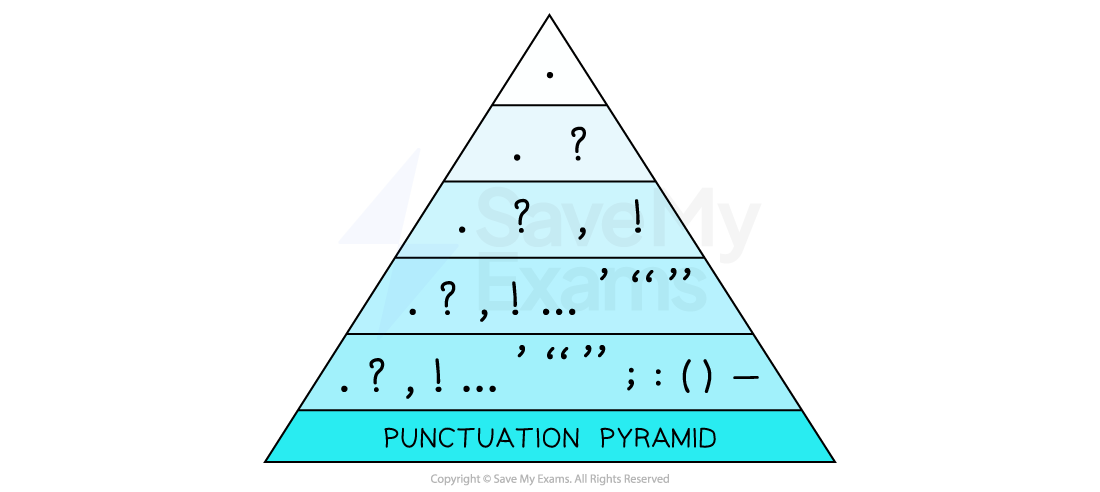Paper 1 Question 5: Spelling, Punctuation and Grammar
Question 5 awards up to 16 marks for accurate spelling, punctuation and grammar or, as it is called in the mark scheme, technical accuracy. This means that you are awarded marks for using punctuation and grammar correctly, as well as for spelling words accurately. However, to gain the most marks in this question, you are also required to use punctuation and grammar deliberately for effect.
The Assessment Objective for technical accuracy is AO6:
|
AO6 Use a range of vocabulary and sentence structures for clarity, purpose and effect, with accurate spelling and punctuation |
One of the key things the examiners are looking for is a range of different sentence forms in your writing, which will naturally lead to a greater range of punctuation which the examiners can reward. However, getting the basics right and consistency are key. Leaving five minutes to proof-read your work when you have finished writing is therefore really important, as it is easy to make silly mistakes under the pressure of an exam.
There are six strands which make up the 16 marks for technical accuracy. Below we will explore each of these strands (click to go straight to the section):
Exam Tip
|
Exam Tip: Remember, Question 5 requires you to use accurate sentence demarcation and grammar first of all, so ensure you are careful to use basic end-of-sentence punctuation correctly. A common error is the use of commas instead of full-stops. This is called comma-splicing and should be avoided. A comma represents a pause within a sentence, not a break at the end of a sentence. |


